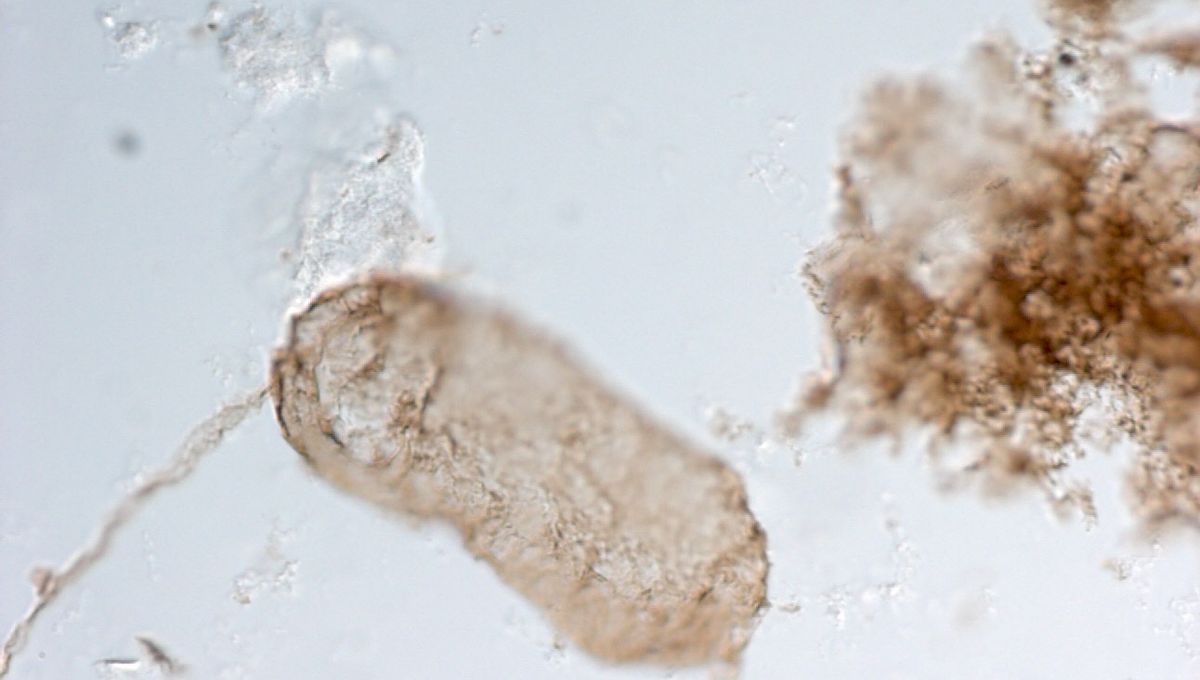
Structures key to oxygen-producing photosynthesis in cyanobacteria have been found in 1.75-billion-year-old fossil cells, three times the age of the previous record. Although Earth’s atmosphere became rich in oxygen before this, the discovery could help piece together the history of one of the most important developments in our planet’s history.
Oxygen is the currency in which complex organisms trade: whether producing it via photosynthesis or using it for energy via respiration. Oxygen is so reactive that it would not stay in the atmosphere, or dissolve in the oceans, for long without constant replenishment. For that, we can thank simpler forms of life, but the details are hazy.
The identification of fossils of the cyanobacteria Navifusa majensis from the McDermott Formation in Australia’s Northern Territory could make that picture a little clearer. If the fossils are indeed thylakoid-bearing cyanobacteria, as their discoverers claim, they are 1.2 billion years older than the previous oldest discovery. The same researchers also claim to have found approximately one billion-year-old photosynthesizers across the planet in Canada, which would have been easily record-setting without the Australian discovery.
We know that Earth was transformed by what is called the Great Oxidization Event (GOE), when oxygen levels in the atmosphere, and dissolved in the oceans, rose to allow new forms of life. The timing of the GOE is heavily debated, but estimates of 2.4 billion years ago comfortably exceed any signs of the responsible organisms. Today, cyanobacteria produce some of the world’s oxygen independently. The rest is made by plastids, descendants of free-living cyanobacteria that have formed symbiotic relationships with plants or algae and now do the oxygen production within leaf or frond cells.
It is likely cyanobacteria were responsible for the GOE, but that’s not something we can be certain of on the evidence available. Stromatolites are known to have been photosynthesizing much earlier, and perhaps some other lifeform produced the GOE’s oxygen, only to be a victim of its own success. Understanding the evolution of photosynthesizing organisms could fill in one of the big gaps in our knowledge of the planet.
The oldest accepted evidence of cyanobacteria dates to between 1.85 and 2.02 billion years ago. However, these fossils, identified as Eoentophysalis belcherensis, lack the thylakoid membranes where photosynthesis occurs. These membranes are thought to have evolved between 2.0 and 2.7 billion years ago, based on molecular clocks; that’s a wide uncertainty. Some fossil evidence to narrow it down would be appreciated.
In the search for such evidence, researchers at the University of Liège looked for specimens of cyanobacteria with thylakoids that could beat previous records. Their newly announced discoveries from Canada’s Grassy Bay Formation would have been impressive enough, but the Australian find really pushes the timeline back. Cyanobacteria from the Democratic Republic of the Congo of similar age to the Canadian specimens lack the membranes.
Microorganisms seldom fossilize well and are easy to overlook when they do. Identifying membranes within them is an even bigger challenge, as these are often crushed or destroyed by heat. However, the authors of the paper write; “Thylakoids represent direct ultrastructural evidence for oxygenic photosynthesis metabolism. Thylakoid membranes are dense, mostly galactolipid, protein-containing bilayers in which photosynthesis occurs in photosynthetic organisms.”
This is what the team claims to have found in the fossils. “It cannot be something else, actually. This arrangement is very unique to cyanobacteria with thylakoids,” study author Dr Emmanuelle Javaux told Science News.
Examples of thylakoids are widespread over the last 150 million years of the fossil record, and have been previously reported in what are thought to be algal aggregates from 550 million years ago and cyanobacterial mats fifty million years older again.
The newly announced specimens are all similar looking, although the Canadians somewhat exceed the Australian samples’ 57–177 µm length and 17–40 µm width. The crucial membranes are just 10-20 nm thick. The Australian specimens are thought to have been deposited in shallow marine environments that, ironically, were lacking in oxygen.
The paper is published open access in the journal Nature.
Source Link: 1.75-Billion-Year-Old Fossilized Cells Are Oldest Evidence For Photosynthesis In Cyanobacteria